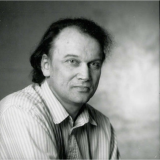| Prof. Gert D. Billing | Summer School | Symposium |
|
|
|||||
|
Professor Gert Due BillingProfessor Gert Due Billing one of the most prominent Danish scientists in recent history died on December 4, 2002. He obtained his formal education at the University of Copenhagen starting with the Cand. Scient. (M.Sc.) degree in Theoretical Chemistry within the area of non-equilibrium kinetics in 1969/70 and the Lic. Scient. degree (Ph. D.) in 1973 with the dissertation report: The Semi-classical Method in Inelastic Scattering Theory. He defended his Dr. Scient. dissertation in 1978 with the title: Introduction to the Theory of Inelastic Collisions in Chemical Kinetics. From 1970-1975 he was an Assistant Professor in mathematics, >thermodynamics, statistical mechanics and quantum chemistry at Chemistry Laboratory III, H. C. Ørsted Institute, University of Copenhagen. From 1975-1988 he was an Associate Professor in thermodynamics and organic chemistry at Medicinsk-Kemisk Institut, University of Copenhagen and from 1988-1989 an Associate Professor in Theoretical Chemistry at Department of Chemistry, H. C. Ørsted Institute, University of Copenhagen. He advanced to a Research Professorship at the Department of Chemistry, University of Copenhagen in 1989 and in 1994 he obtained a professorship in Theoretical Chemistry at the Department of Chemistry, University of Copenhagen. Furthermore, he was in the period 1994-1999 Director of the SNF-center for "Molecular Dynamics and Laser-Chemistry". This national center was funded by the Danish Research Council and brought together theoreticians and experimentalists working within the area of molecular reaction dynamics. He received in 1996 the Samuel Friedman "Rescue Award" and in 2000 the NKT Research Award. His publication list includes more than 325 scientific publications and four books. He was an active researcher until shortly before his death. Future publications will reveal the very last of his contributions to science. Prof. Gert D. Billing's research comprises a major and original contribution to the development of semiclassical and of mixed quantum-classical theories, in particular, pioneering many of the modern treatments in this field. Starting from the "old" classical path theories he developed extremely effective and widely used formulations for the description of numerous dynamical problems, such as inelastic and reactive molecular collisions, molecule-surface dynamics, photodissociation, and non adiabatic transitions. His work on combining quantum mechanical approaches with classical mechanical descriptions of lesser important entities of a chemical reaction broke new ground and enabled detailed investigations of chemical reactions in which a small and interesting part of the system is described by quauntum mechanics and where the rest of the system is given by classical mechanics. Professor Gert D. Billing utilized a number of different mixed quantum mechanical and classical mechanical methods for investigating chemical reactions in the gas phase, in solution, in proteins and on surfaces. He devoted recent years to the successful formulation of a rigorous quantum-classical theory, the so-called "quantum dressed classical mechanics", derived from first principles, where the blending of quantum and classical mechanics arises in a natural way, while the simplicity of the classical picture is maintained. The method is both flexible and general, thus covering a very large range of molecular processes, and extremely easy to implement. In this sense the quantum dressed classical mechanics theory represents the pinnacle of his research: all previously developed mixed quantum-classical methods can be derived from this rigorous scheme as approximations, thus justifying their success in the description of the physical phenomena for which such approximations hold. Prof. Billing's most recent achievements are collected in his book "The Quantum Classical Theory" (2003, Oxford University Press) where, together with an overview of quantum classical methods, a detailed description of the derivation of his theories is given and the tools for their numerical implementation are described. This book thus represents both a scientific legacy and a guide for scientists approaching the quantum classical theory for the first time. |
|||||
